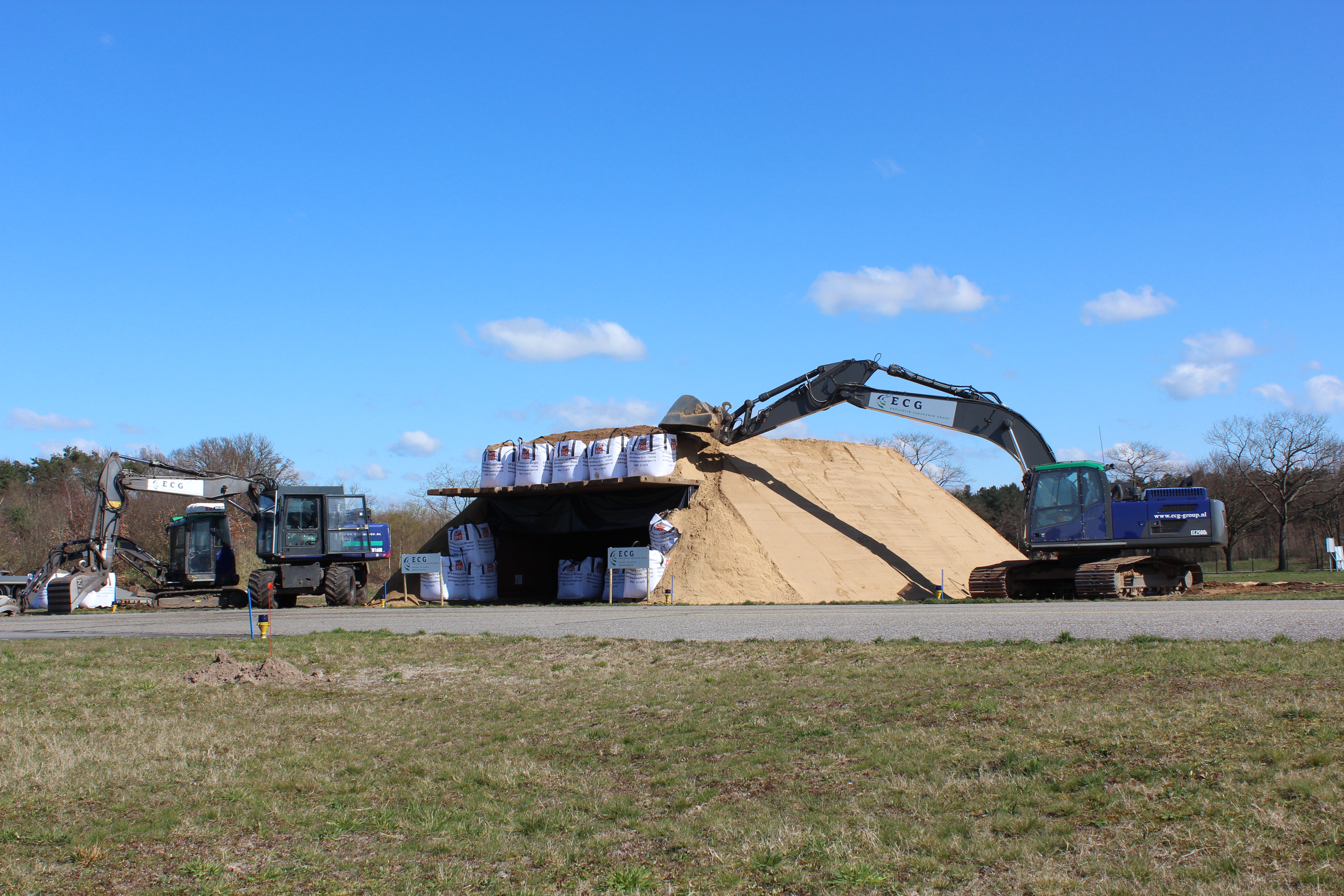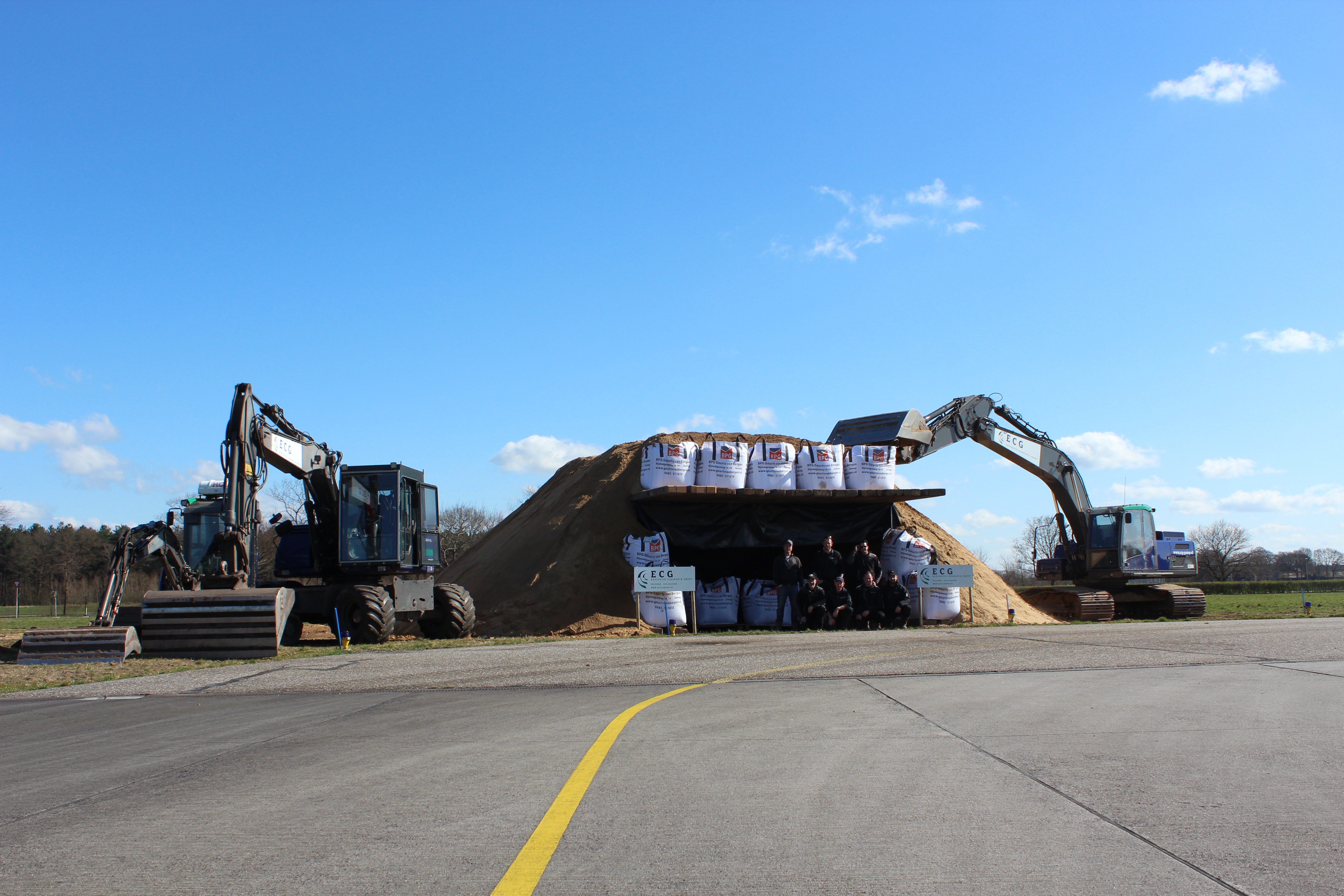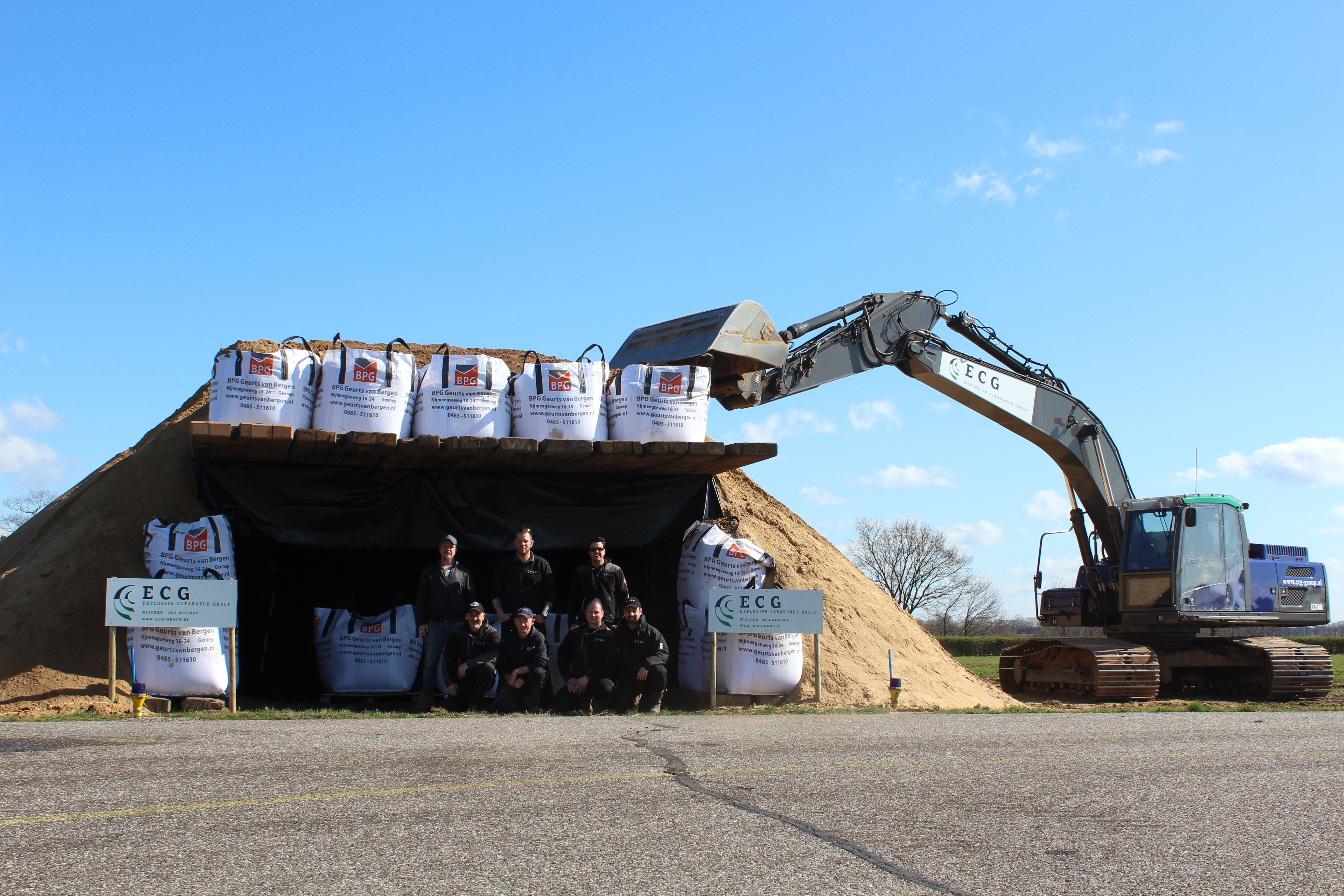Een gecompliceerde bomruiming op vliegveld Gilze Rijen
In februari 2020 is Explosive Clearance Group gestart met de benaderingswerkzaamheden rondom de start- en landingsbaan op vliegveld Gilze Rijen in het kader van het project Vervangen Vliegtuigafreminstallatie van het Rijksvastgoedbedrijf.
Gilze Rijen, ooit een grote Fliegerhorst, is jarenlang het onderkomen geweest voor de zogeheten KG`s (Kampfgeschwaders: squadrons met bommenwerpers). Ook hebben jachtvliegtuigen en nachtjagers gretig gebruik gemaakt van het Brabantse vliegveld. Daarom is het vliegveld Gilze-Rijen meermaals het doelwit geweest van de geallieerden.
Fliegerhorst is de Duitse naam voor een grote luchtmachtbasis. De aanduiding is ontstaan voor de Tweede Wereldoorlog. Het was de aanduiding van een Duits militair vliegveld met de status van een zelfvoorzienend uitgebreid hoofdvliegveld.
Doordat het projectgebied verdacht is op het aantreffen van Conventionele Explosieven (CE) is er allereerst gestart met het uitvoeren van non-realtime detectie door Heijmans Bodem. Tijdens de detectie zijn er meerdere verdachte objecten gedetecteerd. En zo kon het gebeuren dat ECG, onder leiding van de senior OCE-deskundige Henk Kloosterboer, diverse verdachte objecten op het militaire vliegveld zijn benaderd. Gedurende de opsporingswerkzaamheden moesten de vliegbewegingen van de Koninklijke Luchtmacht ook nog eens ongehinderd door kunnen gaan. Een gecompliceerde opdracht, dat door de inspanning en nauwe samenwerking van Rijksvastgoedbedrijf met ECG succesvol is verlopen.
De benaderingen hebben geleid tot onder andere vondsten zoals metalen vliegstrips van de geallieerden, afval en munitieartikelen. Zo werden er 3 Britse Target Indicators (TI) van 250 lbs en ook een Amerikaanse 1000 lbs vliegtuigbom met een staart- en een neusbuis (ontsteking) aangetroffen. Alle alarmsignalen gingen echter af toen een Engelse 500 lbs brisantbom met een gevoelige ontsteker werd geïdentificeerd. Deze vliegtuigbom was gelegen op de meest ongunstige locatie op het vliegveld vanwege de vele omringende vitale kabels van Defensie.
Gevoelige ontsteker
De aangetroffen 500 lbs vliegtuigbom was uitgerust met een afgebroken staartpistool (mechanisme met een ontsteker), de No.37 met anti-demonteerinrichting. De ontstekingsinrichting werkt doordat een glazen ampul, door een draaiende impeller, wordt verpulverd waarna een chemische substantie vrijkomt en een celluloïde schijfje oplost. Zodra dit schijfje genoeg is aangetast kan een voorgespannen slagpinveer in een slaghoedje slaan waarmee de detonatie wordt ingeleid.
Gezamenlijk met de Rijksvastgoedbedrijf, de EODD, Defensie, diverse stakeholders en ECG is naar een zo efficiënt en veilig mogelijke oplossing gezocht. De aard van de aangetroffen munitieartikelen, de ligging tussen de vitale kabels van defensie, de geplande vliegbewegingen en het destijds aankomende evenement ‘Swift Blade’ zijn reden geweest om een passende en vlotte methode toe te passen. Deze oplossing bleek te liggen in een ‘Terp-constructie’. Een door ECG vaker ingezette beproefde methode.

Een Terp-constructie is een speciaal, op maat aangepaste bouwconstructie, waarin de EODD uiteindelijk extra beveiligd zijn werkzaamheden kan uitvoeren. Het is een constructie, die de bomscherven tegenhoudt en de ontstane luchtdruk op een gecontroleerde manier in een veilige richting leidt.
De bomruiming vond uiteindelijk plaats in het eerstvolgende weekend, omdat dan de minste vliegbewegingen op het vliegveld plaatsvonden. Vanaf vrijdag tot en met zondagochtend werd er driftig doorgewerkt om de beschermende Terp op te bouwen. Zoals afgesproken was alles keurig op tijd klaar en op zondagochtend konden de specialisten van de EODD in de beschermende constructie de ontstekingsinrichtingen succesvol veilig demonteren. Dit huzarenstukje werd door de militairen uitgevoerd met behulp van watersnijden. Tenslotte heeft de EODD de bomlichamen afgevoerd en gecontroleerd vernietigd op de Oirschotse Heide. Nadat iedereen weer weg was, heeft ECG de terp afgebroken en kon de Luchtmacht vanaf maandag weer haar baan gebruiken.
“Het totaalpakket aan werkzaamheden is naar volle tevredenheid van opdrachtgever het Rijksvastgoedbedrijf uitgevoerd”, aldus dhr. Kerkhoven projectleider van het Rijksvastgoedbedrijf.

